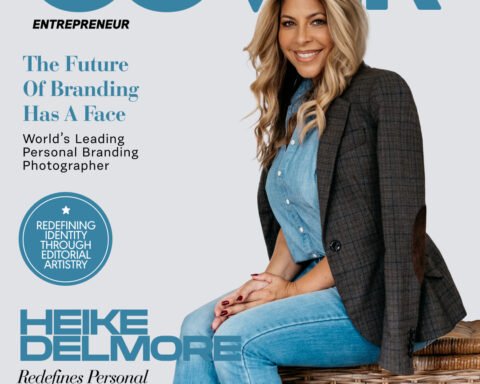Opinions expressed by Entrepreneur contributors are their own.
With everyone talking about transformation in the digital age, it’s easy to forget that the biggest threat to business isn’t machines — it’s “old-school” companies acting mechanically. So, how do you successfully future-proof a business for the fourth industrial revolution? You stay human, even when embracing digitization.
In the ever-changing tides of consumer trends, only the most adaptable businesses will stay afloat and thrive. And yet, too many companies assume their target audience is made up of static individuals with fixed interests — a mindset that will sink even the most strategic business. Establishing who your true customers and consumers are, what they want and how to serve them is not a one-off process or a math equation. When it comes to keeping up with consumer trends, B2C businesses need to follow the ritual of retail: Identify, Listen, Observe, Innovate, Repeat.
1. Identify
For companies to give their customers what they want, the entire business must be aligned on who the customer is and how to serve them best. Employees operating within their siloed functions too often fail to align their own priorities with company goals. Leaders must encourage teams to see beyond their respective functions to appreciate the bigger picture of the business — AKA, reaching and satisfying consumers. For a B2C business to operate like a well-oiled machine, it must be powered by people united under a shared understanding of success.
Of course, none of this is possible until businesses have a firm grasp of their “true” customers vs. “true” consumers. Before 2019, global building materials company James Hardie was focused on marketing to builders and contractors rather than the dealers (the true customers). To better understand the people driving the dealers’ decisions, a specialized marketing team was brought in to analyze the demographic of homeowners remodeling their houses.
Results showed that female homeowners were the key decision makers in the remodeling process — AKA, the true consumers — and so the James Hardie team set out to reach this demographic in the market. By hiring popular home improvement TV hosts Chip and Joanna Gaines from Magnolia Homes (and Fixer Upper), the company’s reputation and trust skyrocketed among female homeowners, which in turn added significant value to the true customers (the dealers).
Related: Want Your Business to Succeed? Use These Tips to Understand Your Customer
2. Listen
Once your true consumers have been identified, it’s time to listen up. While machine learning is great at tracking consumer behaviors, there’s no substitute for direct, human conversation. While this communication may take the form of online surveys and focus groups, the most authentic and useful feedback comes from meeting your consumers in their own environment.
Within the consumer goods sector of multinational conglomerate 3M, this lesson took a rare, sticky form: a 3×3″ Post-It note. While product sales were booming in the U.S., the numbers were dismal in Asia. To better understand this disconnect, 3M sent a team of marketers and R&D employees to Japan to investigate. The feedback from Japanese consumers was overwhelming and consistent: “It’s just too big.”
3. Observe
Once you’ve listened to what consumers have to say, you must also observe what they do. Unlike computer analysis, holistic observation requires human empathy. By witnessing consumer behavior firsthand, one can identify not only usage, habits and attitude but also unmet needs — laying the groundwork for true innovation.
Through on-site observation, 3M was able to shed light on a crucial design flaw in the Post-It note: its shape was not yet inclusive of the ways other cultures write their languages — a fact that had not been considered in early prototypes. Whereas many Western cultures write from left to right, using the Latin alphabet, Japanese consumers write from top to bottom, using Hiragana, Katakana and Kanji characters. Thus, the size and shape of the only existing Post-It note were not conducive to the global workplace. By neglecting to consider a universal design early on, 3M had been severely limiting its market penetration in Asia.
Much like handwriting, the mechanics of what we do are often subconscious — especially when it comes to mundane or household tasks. Taking subconscious habits into consideration is essential for innovation. For example, while home appliance manufacturers such as LG and Samsung prioritized more high-tech capabilities for their multi-mode washer and dryer machines, Electrolux took a different tack. Between 2012 and 2014, Electrolux shifted its focus to include acute, consumer-driven research: rather than boasting an array of electronic gadgets and a fleet of engineers; the company conducted a series of behavioral studies.
Watching the footage from the staged laundry rooms revealed patterns in consumer laundry routines that the consumers hadn’t thought to articulate in earlier surveys. Wanting to dump the dirty clothes into the washer and start it as quickly as possible, consumers tried to do so without touching the dirty clothes — and by pressing as few buttons as possible. Such crucial, simple facts went unnoticed or undervalued by competitors, but Electrolux was able to capitalize on these learnings when designing a new model.
Related: 7 Things Customer-Centric Companies Do
4. Innovate
The difference between innovation and invention is both foresight and imagination. For companies to be authentically innovative, they can’t simply understand their consumers’ existing behavior, and they must also anticipate their future preferences, providing a personalized experience tailored to their unmet (and often unrealized) needs.
By investing in their true consumers, 3M and Electrolux were able to help drive transformation through innovation. By engaging directly with Japanese consumers in their own region and their own language, 3M was able to bridge the cultural gap and design a new shape of Post-It that better served a global workforce: the more slender 0.5×2″ Post-It flag was an international hit. Likewise, Electrolux’s next washing machine proved to be a crowd-pleaser in both form and function: the sleek design included primarily three simple buttons — colors, whites and activewear — and the machine’s new door feature allowed target consumers (women with an average height of a 5’7″) to open the machine with their hip, for an even more efficient and hands-free process.
5. Repeat
If your business was able to innovate new products and solutions by identifying, listening to, and observing your true consumers — congratulations! Now, do it again. Such is the nature of B2C business; like any relationship between a company and its target audience must be maintained and nurtured. The retail ritual is just that: habitual and ongoing. The storyboard is constantly being erased and redrawn. Despite AI’s increasing predictions, you will never know what consumers think unless you engage with them as people with ever-evolving needs and wants.
[ad_2]
Source link
















